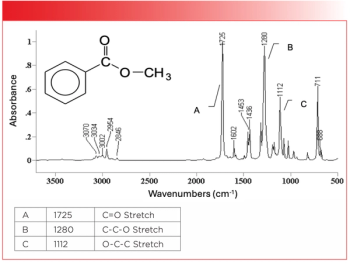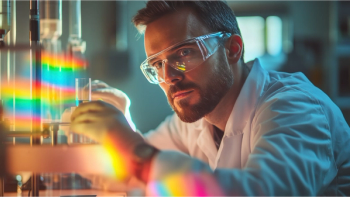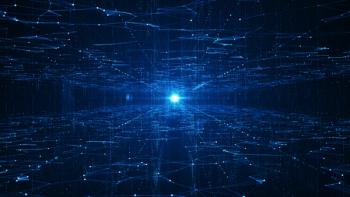
Smarter Cities Using IoT with Optical Sensors to Drive Urban Sustainability
A new study examines the role of Internet of Things (IoT) technology in fostering sustainable urban development. Through a systematic review of 73 publications, researchers highlight how IoT-enabled sensors improve air quality, transportation, disaster management, and resource efficiency in smart cities.
Cities are the centers of economic, social, and cultural activity, yet rapid urbanization has led to challenges such as environmental pollution, traffic congestion, and inefficient resource management. By 2050, nearly 70% of the world’s population is projected to live in cities, making sustainable urban development a critical priority. In a recent study published in Sensors, researchers Fan Zeng, Chuan Pang, and Huajun Tang from the Macau University of Science and Technology conducted a systematic literature review to examine the impact of IoT in advancing sustainable smart cities (1).
The IoT is a network of interconnected devices, including optical sensors, that communicate via the internet, providing cities with real-time data for management and decision-making. The study analyzes how IoT-enabled sensors facilitate data collection, transmission, and application to improve urban sustainability, particularly in areas such as air quality monitoring, transportation, disaster management, weather monitoring, and waste reduction. By integrating these technologies, cities can enhance infrastructure while reducing environmental impact, aligning with the United Nations’ Sustainable Development Goal (UNSDG) 11: Sustainable Cities and Communities (1).
How IoT Sensors Improve Smart Cities
One of the core contributions of IoT to smart cities is its ability to monitor environmental conditions and optimize urban services. The researchers reviewed IoT applications across various domains (1,2).
1. Air Quality Monitoring: IoT sensors are widely used to track both indoor and outdoor air quality, detecting levels of pollutants such as carbon dioxide and particulate matter. For example, a system that continuously monitors CO2 levels, humidity, temperature, and sound levels, can adjust air conditioning systems accordingly to improve energy efficiency (1). Similarly, the MonTreAL system enables large-scale temperature and humidity monitoring in libraries, helping to preserve cultural artifacts by maintaining optimal environmental conditions (1).
2. Smart Transportation: Traffic congestion and inefficient parking systems contribute significantly to urban pollution. The study highlights smart parking systems in cities, where IoT-enabled sensors detect available parking spaces, reducing vehicle emissions by minimizing idle driving (1).
3. Disaster Management and Public Safety: IoT plays a critical role in urban resilience by providing real-time data for emergency response. Sensor networks can detect earthquakes, floods, and other natural disasters, enabling authorities to act swiftly and reduce damage.
4. Resource and Waste Management: IoT also enhances urban sustainability by improving waste management. Smart bins equipped with fill-level sensors optimize waste collection routes, reducing fuel consumption and operational costs. Additionally, real-time water quality monitoring prevents contamination and ensures efficient resource allocation.
Data Transmission and Analysis
The study also reviews the communication technologies used to transmit sensor data. IoT networks rely on protocols such as LoRaWAN, Zigbee, and 5G to ensure efficient and secure data transmission. Additionally, artificial intelligence (AI) and machine learning (ML) algorithms play a crucial role in analyzing vast amounts of sensor data, enabling predictive maintenance and automated decision-making (1).
Challenges and Future Directions
Despite its potential, the integration of IoT in smart cities faces challenges, including data privacy concerns, cybersecurity threats, and the need for standardized protocols. The researchers identify key areas for future investigation, such as the development of unified IoT frameworks for integrating multiple smart city functions into a single platform. They also emphasize the need for more research into IoT applications in emerging sectors like smart agriculture, healthcare, education—and for evaluation of new and existing applications for optical sensor technologies (1,2).
The study by Zeng, Pang, and Tang underscores the transformative role of IoT in sustainable urban development (1). By leveraging sensor networks and data-driven decision-making, smart cities can improve environmental sustainability, enhance public services, and optimize resource use. While challenges remain, ongoing research and technological advancements will be crucial in unlocking the full potential of IoT in shaping the cities of the future.
References
(1) Zeng, F.; Pang, C.; Tang, H. Sensors on Internet of Things Systems for the Sustainable Development of Smart Cities: A Systematic Literature Review. Sensors 2024, 24 (7), 2074. DOI:
(2) Aleksic, S. A Survey on Optical Technologies for IoT, Smart Industry, and Smart Infrastructures. J. Sens. Actuator Netw. 2019, 8 (3), 47. DOI:
Newsletter
Get essential updates on the latest spectroscopy technologies, regulatory standards, and best practices—subscribe today to Spectroscopy.




